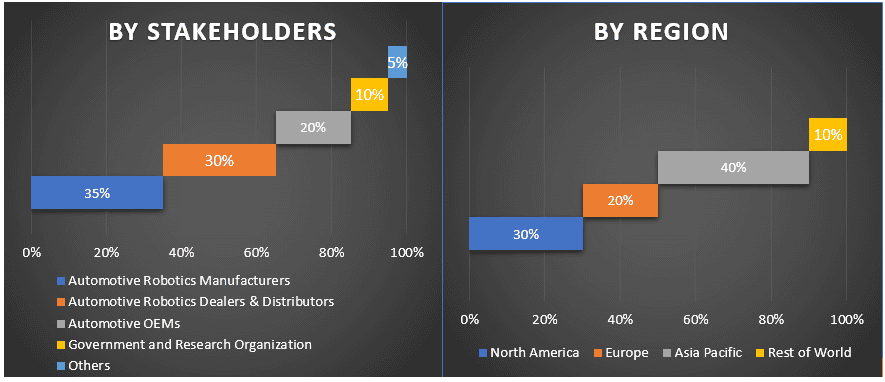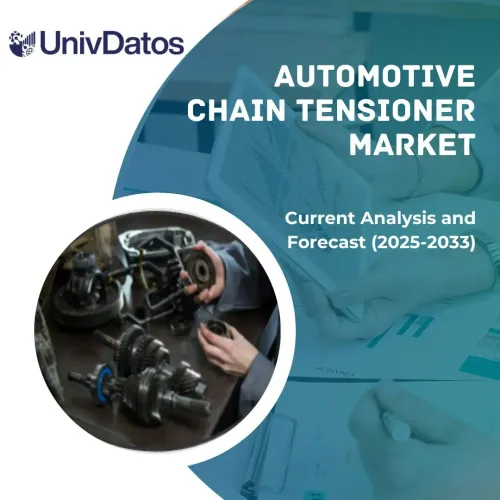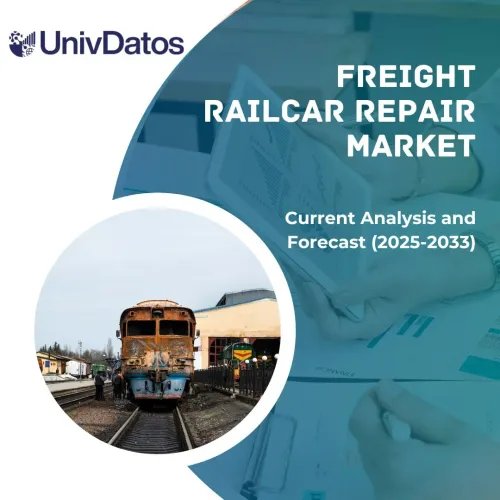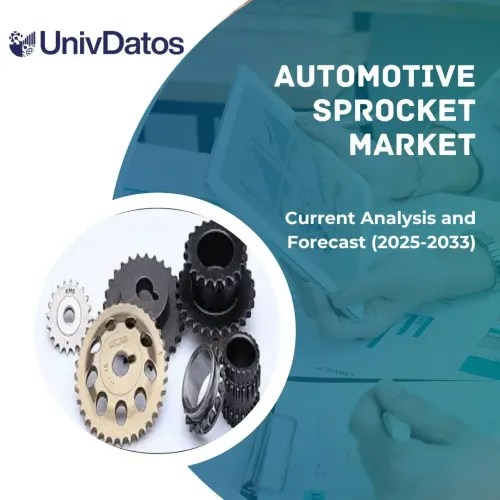- Home
- About Us
- Industry
- Services
- Reading
- Contact Us
Automotive Robotics Market: Current Analysis and Forecast (2021-2027)
Emphasis on Component (Controller, Robotic arm, End effector, Sensors, Drive, and Others); Type (Articulated, Cylindrical SCARA, Cartesian, and Others); Application (Welding, Painting, Cutting, Material Handling, and Others); Region and Country

Global Automotive Robotics is anticipated to display a CAGR of around ~12% over the forecast period (2021-2027). The automotive sector is extremely dynamic, forcing automakers to be extremely adaptable. As a result, manufacturers are increasingly implementing smart product systems and flexible logistics systems into their core competencies. For many years, the automotive industry has used industrial robotics in its manufacturing process. Robotic technologies in the automobile sector are more cost-effective, efficient, and safe than their human counterparts since they can complete tasks faster. Reduced operating expenses can be achieved by increasing operational flexibility and reducing raw material wastage and inefficiencies in the workflow, resulting in increased profitability for manufacturers. The existence of numerous major and small size, well-established competitors in the robotics sector makes the global automotive robotics market competitive. Due to the introduction of technologically creative and new products such as collaborative robots, the degree of competition in this market has increased in recent years. Several vendors in this market are also exploring revolutionary technologies using IoT and cloud services. In terms of outstanding product quality, technological advances, durability, and reliability, the worldwide market is predominantly dominated by international, established firms. Local players, on the other hand, are working hard to stay competitive in the market.
Insights Presented in the Report
“Amongst Component, Controller segment dominated the market in 2020”
Based on component, the market is segmented into Controller, Robotic arm, End effector, Sensors, Drive, and Others. The Controller segment generated revenue of USD XX billion in 2020 and is expected to grow at a CAGR XX% during the forecasted period. In terms of value, the controller category is predicted to have the greatest market share in 2020. The increased sales of all types of robots that use the controller are a major driver of the industry. Another cause for its dominance is due to its ability to offer high motion control and faster integration with any additional hardware
“Amongst Type, Articulated segment dominated the market in 2020”
Based on type, the market is segmented into Articulated, Cylindrical SCARA, Cartesian, and Others. The Articulated segment generated revenue of USD XX billion in 2020 and is expected to grow at a CAGR XX% during the forecasted period. Rotary joints are found on articulated robots. Rotary joints can range in complexity from a simple two-joint mechanism to a complicated ten-joint device. The most frequent type of robot utilized in the automotive industry is an articulated robot. High flexibility enables quick process changes, which is why small and medium-sized businesses are embracing articulated robots, resulting in increased global demand
“Amongst Application, Welding segment dominated the market in 2020.”
Based on application, the market is segmented into Welding, Painting, Cutting, Material Handling, and Others. The Welding segment generated revenue of USD XX billion in 2020 and is expected to grow at a CAGR XX% during the forecasted period. The rising deployment of welding robots is linked to factors such as improving production line safety and efficiency and boosting the speed of multi-material vehicle production
“Asia Pacific represents the largest market.”
During the projection period, Asia Pacific is expected to have the largest market share in 2020. Asia-Pacific is the world’s fastest-growing area, with countries like India, China, Taiwan, and South Korea emerging as regional leaders. Leading vendors such as ABB and KUKA are establishing operations in the region. Furthermore, government laws and subsidies have aided infrastructure improvement projects. These factors have positioned APAC as the preferred automobile manufacturing hub, driving the automotive robotic market. In terms of growth, China and India are the most developed countries in Asia-Pacific, and many sectors, like automotive, electronics, and aviation, are opening facilities in these countries, creating demand for automotive robots and making Asia-Pacific an expanding region. Some of the major players operating in the market include Kawasaki Heavy Industries, Ltd, Fanuc Corporation, Yaskawa Electric Corporation, Abb Ltd, Comau SPA, Nachi-Fujikoshi Corp, Rockwell Automation, Inc, Seiko Epson Corporation, Denso Wave Incorporated and Kuka Ag etc.
Reasons to buy this report:
- The study includes market sizing and forecasting analysis validated by authenticated key industry experts
- The report presents a quick review of overall industry performance at one glance
- The report covers an in-depth analysis of prominent industry peers with a primary focus on key business financials, product portfolio, expansion strategies, and recent developments
- Detailed examination of drivers, restraints, key trends, and opportunities prevailing in the industry
- The study comprehensively covers the market across different segments
- Deep dive regional & country-level analysis of the industry
Customization Options:
The Global Automotive Robotics can further be customized as per the requirement or any other market segment. Besides this, UMI understands that you may have your own business needs, hence feel free to connect with us to get a report that completely suits your requirements.
Table of Content
Automobile manufacturers are incorporating robotics into their manufacturing processes because robots provide numerous benefits on the production line, including enhanced precision, efficiency, flexibility, and reliability. Because of this widespread adoption of automotive robotics, the automobile industry has become the world’s most automated industry and one of the greatest users of industrial robots. Furthermore, automotive manufacturing robots provide a competitive advantage to automotive firms by improving quality, increasing capacity, lowering warranty costs, and protecting workers from tough and dangerous duties. Furthermore, automotive robotics are mostly used in automobile assembly factories for applications such as spot welding, painting, and other similar tasks; however, there are several other applications for automotive robotics across the supply chain.
Seek More Details About Research Methodology
With the tremendous expansion of the automotive industry, there has been an increase in demand for industrial robots to simplify complicated production processes, which is driving the market growth. Automotive robots help to improve quality and productivity while lowering costs, which is fueling industry growth. Another growth-inducing aspect is the growing worry about employee safety as a result of the increasing number of injuries, manual errors, and accidents caused by working in hazardous settings in the car manufacturing business. This is bolstered by substantial financing and a slew of favorable initiatives by government agencies throughout the world to incorporate new gadgets and equipment to assure worker safety while adhering to safety regulations. Rapid technical improvements, such as the integration of the Internet of Things (IoT), cloud solutions, and autonomous intelligent vehicles (AIVs) for safely transporting components and materials from one location to another, are further driving market expansion. Other factors, such as strategic collaborations among key players, rising vehicle production due to rising disposable incomes in emerging economies, and rising research and development (R&D) investments for introducing energy-efficient automotive robots, are all contributing to the market’s positive outlook.
Analysis of Historical Market Size
Step 1: In-Depth Study of Secondary Sources:
A detailed secondary study was conducted to obtain the historical market size of the Automotive Robotics through company internal sources such as annual reports & financial statements, performance presentations, press releases, etc., and external sources including journals, news & articles, government publications, competitor publications, sector reports, third-party database, and other credible publications.
Step 2: Market Segmentation:
After obtaining the historical market size of the Automotive Robotics, we conducted a detailed secondary analysis to gather historical market insights and share for different segments & sub-segments for major regions. Major segments included in the report are component, type, and application. Further regional & country-level analyses were conducted to evaluate the overall adoption of Automotive Robotics in the global context.
Step 3: Factor Analysis:
After acquiring the historical market size of different segments and sub-segments, we conducted a detailed factor analysis to estimate the current market size. Further, we conducted factor analysis using dependent and independent variables such as growing government incentives and demand for eco-friendly transportation, etc. Historical trends and their year-on-year impact on the market size and share were analyzed. Demand and the supply-side scenario were also thoroughly studied.
Current Market Size Estimate & Forecast
Current Market Sizing: Based on actionable insights from the above 3 steps, we arrived at the current market size, key players in the market, and market shares of the segments and company. All the required percentage split and market breakdowns were determined using the above-mentioned secondary approach and were verified through primary interviews.
Estimation & Forecasting: For market estimation and forecast, weights were assigned to different factors including drivers & trends, restraints, and opportunities available for the stakeholders. After analyzing these factors, relevant forecasting techniques i.e., the bottom-up approach were applied to arrive at the market forecast to 2027 for different segments and subsegments across the major regions globally. The research methodology adopted to estimate the market size encompasses:
- The industry’s market size, in terms of value (US$) and the adoption rate of Automotive Robotics across the major markets
- All percentage shares, splits, and breakdowns of market segments and sub-segments
- Key players in Automotive Robotics in terms of products offered. Also, the growth strategies adopted by these players to compete in the fast-growing market.
Market Size and Share Validation
Primary Research: In-depth interviews were conducted with the Key Opinion Leaders (KOLs) including Top Level Executives (CXO/VPs, Sales Head, Marketing Head, Operational Head, Regional Head, Country Head, etc.) across major countries. Primary research findings were then summarized, and statistical analysis was performed to prove the stated hypothesis. Inputs from primary research were consolidated with secondary findings, hence turning information into actionable insights.
Split of Primary Participants in Different Regions

Market Engineering
The data triangulation technique was employed to complete the overall market estimation and to arrive at precise statistical numbers for each segment and sub-segment of the Automotive Robotics. Data was split into several segments & sub-segments post studying various parameters and trends in the areas of elevation system, type, product type, structure, and region.
The main objective of the Automotive Robotics Study
The current & future market trends of Automotive Robotics were pinpointed in the study. Investors can gain strategic insights to base their discretion for investments on the qualitative and quantitative analysis performed in the study. Current and future market trends would determine the overall attractiveness of the market at a regional & country level, providing a platform for the industrial participant to exploit the untapped market to benefit as a first-mover advantage. Other quantitative goals of the studies include:
- Analyze the current and forecast market size of Automotive Robotics in terms of value (US$). Also, analyze the current and forecast market size of different segments and sub-segments
- Segments in the study component, type, and application
- Defined analysis of the regulatory framework for the Global Automotive Robotics industry
- Analyze the value chain involved with the presence of various intermediaries, along with analyzing customer and competitor behaviors of the industry
- Analyze the current and forecast market size of the Automotive Robotics for the major regions & countries
- Major regions studied in the report include North America (US, Canada, Rest of North America), Europe (Germany, United Kingdom, France, Italy, and Rest of Europe), Asia Pacific (China, Japan, India, South Korea, Rest of Asia-Pacific), and Rest of World
- Company profiles of the Automotive Robotics players and the growth strategies adopted by them to sustain in the fast-growing market
Deep dive regional & country-level analysis of the industry
Related Reports
Customers who bought this item also bought










